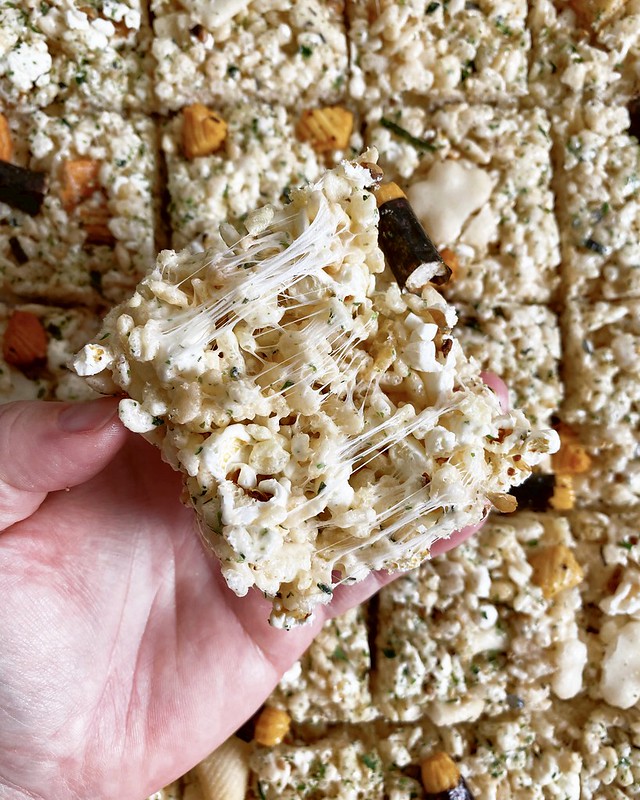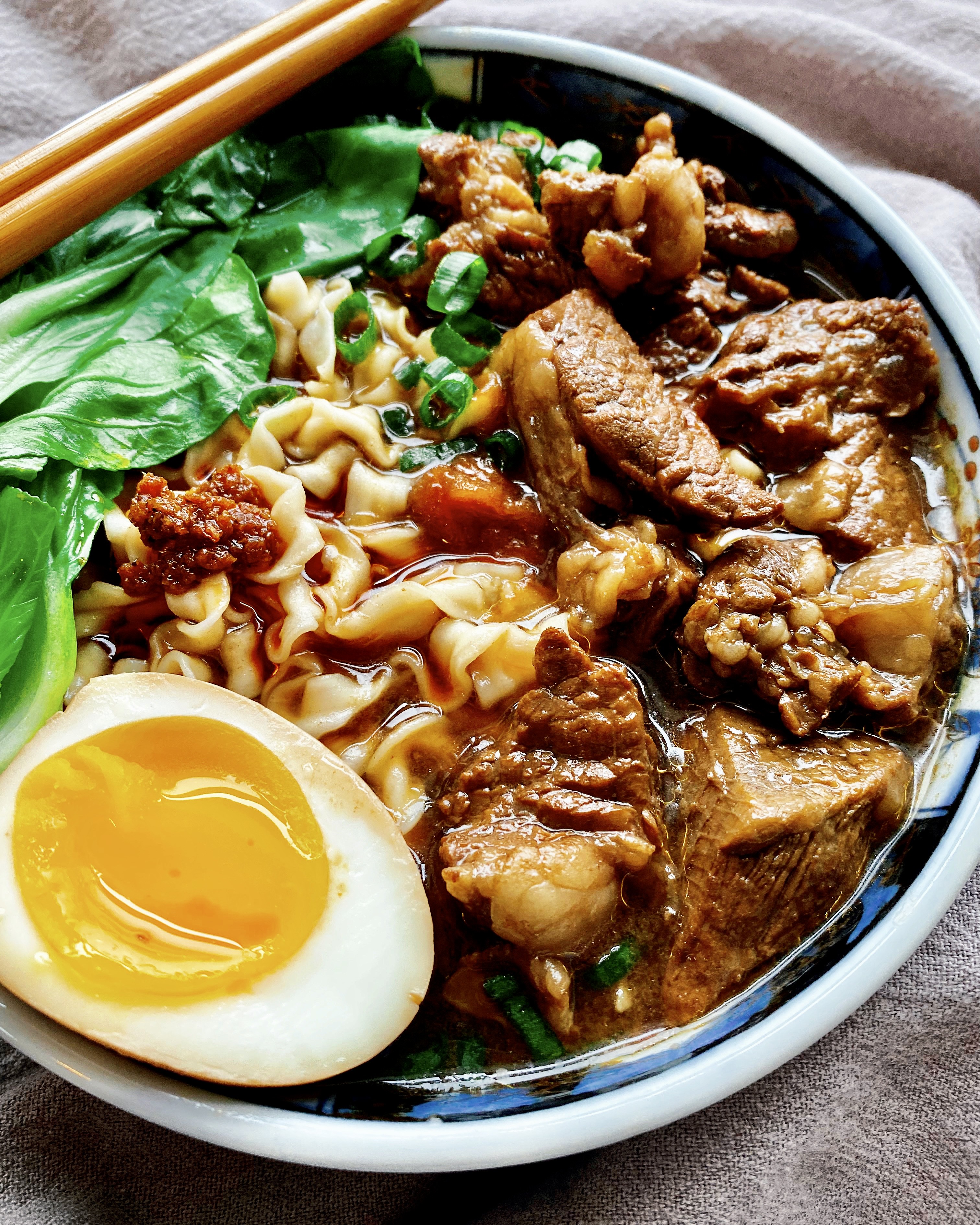Quite a few things have changed since I posted my first rendition of beef noodle soup on this blog 14 years ago (it was my 3rd blog post ever!): I've gotten better at cooking; I went through a vegan, then vegetarian, then pescatarian stint; and I started posting on Instagram.
I'd say I'm more of a social carnivore now in that I do eat meat when I'm out with friends but very rarely cook it at home. In fact, I think I've only made beef noodle soup maybe once or twice since I posted the original recipe. But after seeing all the delicious BNS posts on the Taiwanese Home Cooking FB group and receiving a chuck eye steak from Vermont Wagyu, I knew it was time to fix that.
Looking back at the original BNS post, I was shocked to see that it called for 1.5 cups of soy sauce! I chalk it up to one of those mistakes that happens when someone with little cooking experience tries to transcribe a recipe from someone who never measures anything when cooking. I've since adjusted the quantity to a more reasonable 1/2 cup of low-sodium soy sauce.
The original version calls for napa cabbage and angel hair pasta, and while both are perfectly fine to use, I now opt for the more photogenic baby bok choy and use more authentic Taiwanese dried noodles like A-Sha brand. And for the lu dan, instead of cooking already hard-boiled eggs in the sauce, I prefer tucking chilled 7-minute boiled eggs in the soup after it's been strained and cooling. This way the yolks remain nice and jammy while the whites absorb the delicious flavor.
A few other changes: I've listed white peppercorns, a cinnamon stick, and bay leaf as optional spices in addition to the star anise. If you don't have them it's fine, but if you have them it will add a nice complexity to the soup. The star anise is an absolute must, though, to make this a Taiwanese beef noodle soup. Lastly, I stole this idea from Kenji's recipe--since almost all soups taste better the next day, I remove the beef from the soup, then strain everything else out before letting it chill overnight in the fridge.
Taiwanese Beef Noodle Soup
makes about 2-3 servings
1 lb. chuck steak, cut into 1" chunks
1 tablespoon oil, if needed
2 scallions, cut into 2" pieces
1 inch ginger, sliced
3 garlic cloves, peeled and smashed
1 tomato, skinned and roughly chopped
1 star anise
1 teaspoon white peppercorns (optional)
1 cinnamon stick (optional)
3 tablespoons rock sugar
1/2 cup low-sodium soy sauce
1/2 cup Shaoxing rice wine
2 cups beef broth
1 bay leaf (optional)
3 large eggs
Baby bok choy or napa cabbage, blanched
Noodles, cooked
Chili oil/sauce (like Sze Daddy), optional
If there is a lot of extraneous fat on the steak, you can cut it off and render it in a large Dutch oven or pot (add it to the pot cold then turn the heat to medium). Otherwise, heat the oil in the pot and add the beef. Flip the beef around to brown all the sides, then remove from the pot.
Add the scallions, ginger, garlic, star anise, tomato, and white peppercorns and cinnamon stick, if using, to the pot and cook for a couple of minutes until very fragrant. Add the rock sugar and stir around until it has mostly dissolved. Return the beef to the pot and deglaze the bottom with the soy sauce and wine. Add the beef broth and bay leaf, if using, and bring to a simmer. Cover and continue to simmer on low for an hour.
In the meantime, bring another pot of water to boil. Add the eggs (straight from the fridge) to the pot and set the timer for 7 minutes. Prepare an ice bath. After 7 minutes, remove the eggs from the pot and plunge them into the ice bath. Once they are cool enough to handle, peel the eggs and set aside in the fridge to chill.
After an hour, check the beef for tenderness and the soup for flavor. Cook longer or adjust seasonings if needed. When the beef is ready, transfer from the soup into another pot or container large enough to hold the soup. Strain the rest of the soup into the pot/container with the beef in it. Add the peeled eggs, cover, let come to room temperature, then place in the fridge overnight.
When ready to serve, reheat the soup (remove the eggs first if you want to keep them jammy). Blanch the veggies in boiling water until bright green and tender. Remove and then cook the noodles in the same boiling water. Drain and portion the noodles into 3 bowls, ladle the soup and beef over the noodles and add the veggies. Slice the eggs in half and add to the bowl. Serve with chili sauce (I like Sze Daddy for additional Taiwanese flavors) if you like.
Previously: No Knead Sourdough Focaccia
Next: Hurricane Popcorn Marshmallow Treats












